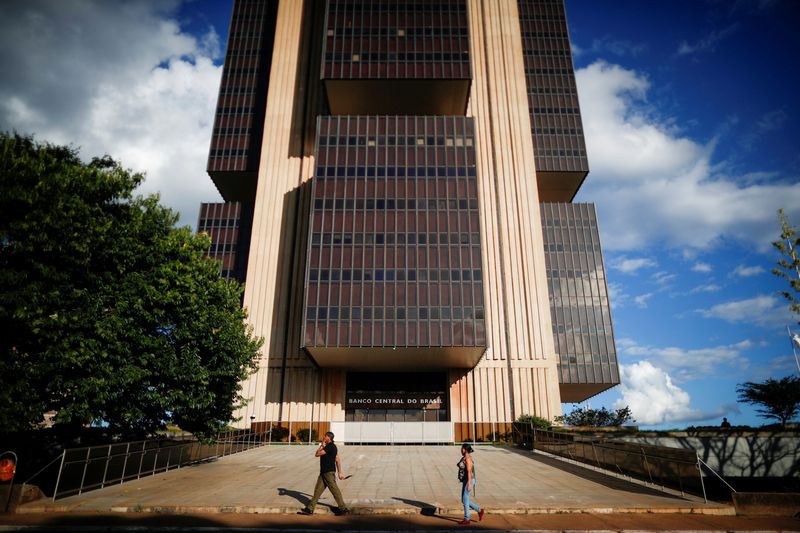
© Reuters. FILE PHOTO: People walk in front the Central Bank headquarters building in Brasilia, Brazil March 22, 2022. REUTERS/Adriano Machado/File Photo
BRASILIA (Reuters) – Brazil’s government debt as a percentage of gross domestic product (GDP) rose to 73% in February, largely impacted by an increase in interest expenses, according to data from the central bank on Friday.
This indicator is considered the main reference for the country’s public accounts sustainability and was at 72.5% in January.
Last week, the central bank decided to hold its benchmark interest rate at a six-year high of 13.75% for the fifth consecutive time, citing concerns over worsening inflation expectations and defying intense pressure from new President Luiz Inacio Lula da Silva to reduce borrowing costs.
According to the central bank, the Brazilian public sector posted a primary deficit of 26.453 billion reais ($5.19 billion) for the month, below the 30 billion reais shortfall expected by economists polled by Reuters.
Over the course of 12 months, the public sector recorded a surplus equivalent to 93.250 billion reais, or 0.93% of GDP.
However, the outlook is for a return to a primary deficit this year, especially after the new leftist President Luiz Inacio Lula da Silva obtained approval from Congress for a multi-billion reais spending package to fulfill campaign promises.
In February, the central government’s 39.238 billion reais deficit was the main driver of the result. States and municipalities reached a primary surplus of 11.847 billion reais, while state-owned companies had a surplus of 938 million reais.
($1 = 5.0983 reais)





